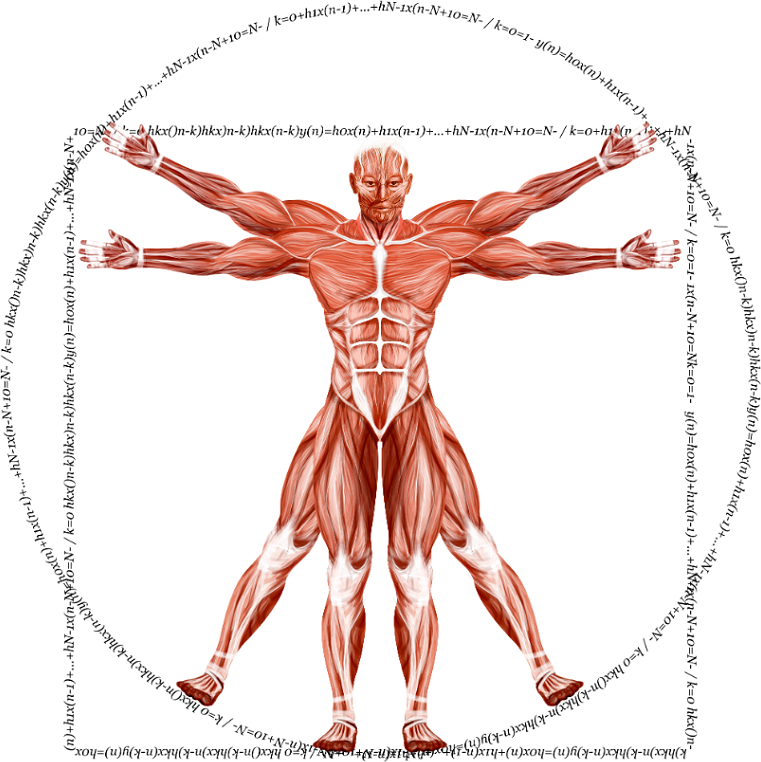20 Best Chest Exercises to Build Your Perfect Pecs
The best exercises to grow your chest, ranked from top to worst by expert
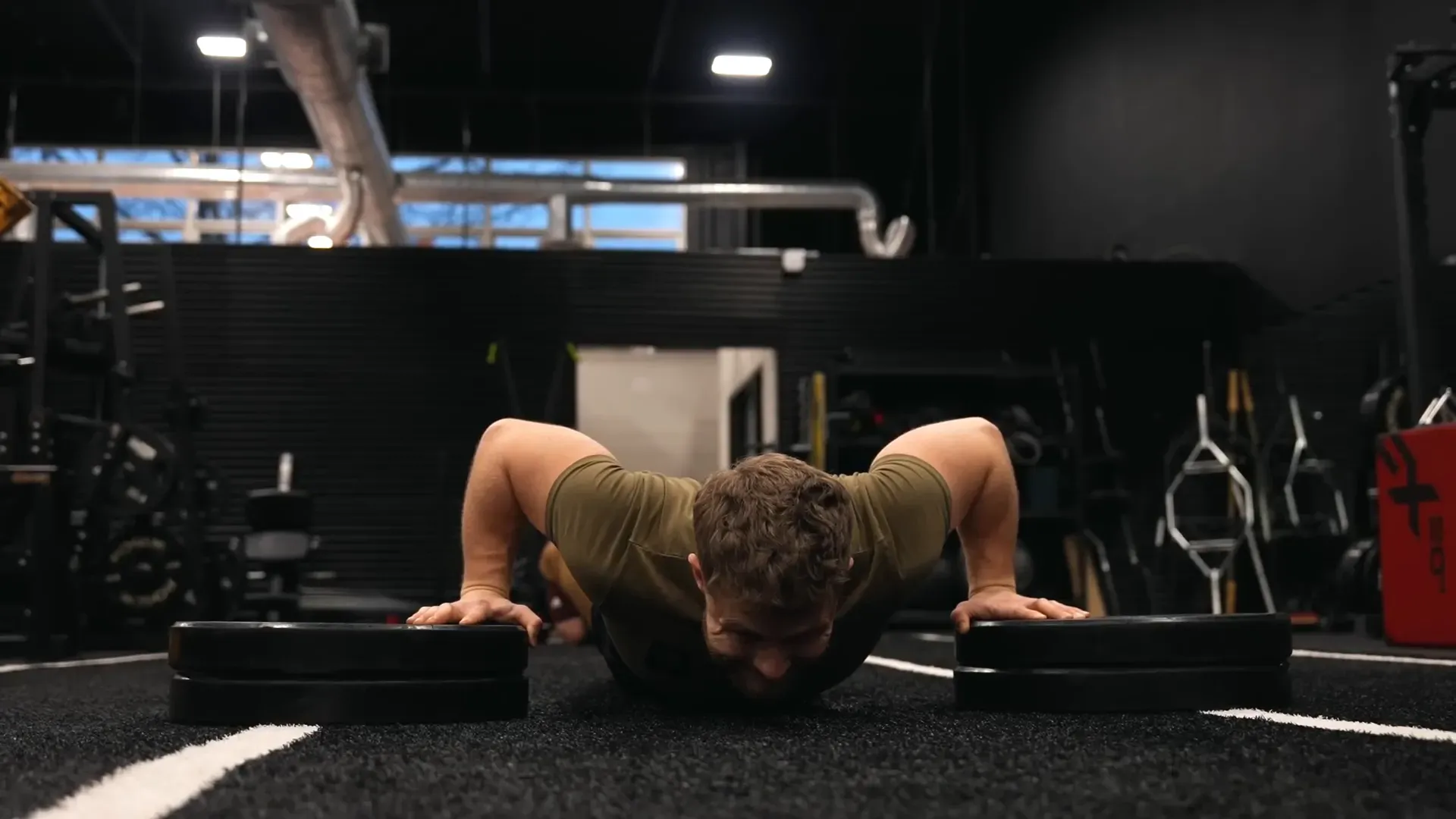
Key Takeaways
- Focus on Range of Motion: Choose exercises that allow a full stretch, as this enhances muscle activation and growth. Movements like the seated cable pec flye and machine chest press provide excellent range for targeted chest work.
- Prioritize Overload: Exercises that support progressive overload, like the bench press and incline dumbbell press, are essential for continued strength and size gains.
- Know The Best Exercises: High-ranking exercises like dips and dumbbell flyes target different parts of the chest for balanced growth. Avoid low-tier exercises that limit range or shift focus, like the plate press.
- Mind-Muscle Connection Matters: For maximum pec activation, stabilize the shoulders and ensure form targets the chest. Adjust weights and angles as needed for the best chest workout results.
Want to build a stronger, more impressive chest without wasting time on ineffective exercises?
In this article, we review, critique, and expand on Jeff Nippard's guide to the best chest exercises for muscle growth. Our team of experts, including an exercise scientist with over 20 years of gym experience, carefully fact-checked and analyzed every claim.
You'll discover little-known tips to maximize chest development while minimizing joint stress. We break down the science behind each exercise, helping you build more muscle and achieve a more balanced, aesthetic physique.
Related:
- 3 Chest Workouts for Muscle Hypertrophy (Top 12 Exercises)
- Chest Exercises for Hypertrophy? Expert Opinion, Pro Tips & Examples
- 4 Upper-Body Hypertrophy Workouts (11 Best Exercises)
In a Nutshell—The Ultimate Guide to the Best Chest Exercises
• To emphasize specific areas, include exercises with a targeted focus.
• Incline press is excellent for the upper chest, while decline movements are ideal for adding thickness to the lower chest.
Both provide a strong stretch in different areas, ensuring a complete workout that addresses all parts of the chest. Good form is crucial: stabilize your shoulder blades and angle your elbows slightly for optimal chest activation and to prevent shoulder strain.
Skip exercises with limited chest engagement, like the hex press and plate press, which rely more on triceps than pecs. Stick to moves that deliver steady tension and work the chest fully, especially when progressing with heavier weights or additional reps. Using a combination of well-ranked exercises keeps your chest workouts efficient and effective, building strength and size over time.
| Key Concept | Main Insight |
|---|---|
| Range of Motion | Exercises with deep stretch maximize muscle activation and chest growth. |
| Progressive Overload | Consistent weight or rep increase is key for strength and muscle gains. |
| Compound Movements | Bench press and dips build size and strength across the entire chest. |
| Isolation Exercises | Flyes and cable crossovers shape and define specific chest areas. |
| Upper vs. Lower Chest Focus | Incline and decline presses target upper and lower chest for balance. |
| Proper Form | Stabilized shoulders and controlled reps enhance chest engagement. |
What Makes a Chest Exercise "The Best"?
To make it to the top, an exercise must meet several criteria.
First, it should provide a deep stretch with high tension—key for muscle activation. Second, it should feel good to perform without causing pain, as discomfort can lead to poor form and limit results. Finally, the exercise must allow for progressive overload.
If you can't easily add weight or reps, it might not be ideal for continued growth. Only exercises meeting these standards make the cut for the best chest exercises.
20 Best Exercises for Your Chest
The Hex Press: Falling Short
The hex press lacks pec engagement, failing to deliver a strong chest stretch or movement range. With arms tucked in, the triceps take over, limiting chest activation, especially in the inner pecs. This exercise ranks F tier, as it doesn’t match the effectiveness of a standard dumbbell chest exercise.
Plate Press: An Even Bigger Letdown
The plate press is essentially a hex press with even more limitations. The awkward movement and limited overload potential earn it an F tier as well, making it one of the least good chest exercises.
Dumbbell Pullover: A Mixed Bag
While some consider the dumbbell pullover an excellent chest exercise with dumbbells, many lifters don’t feel strong pec activation. It does work the chest, but it also heavily recruits the lats, making it a D-tier choice in terms of isolating the chest.
Bench Press: A Classic Powerhouse
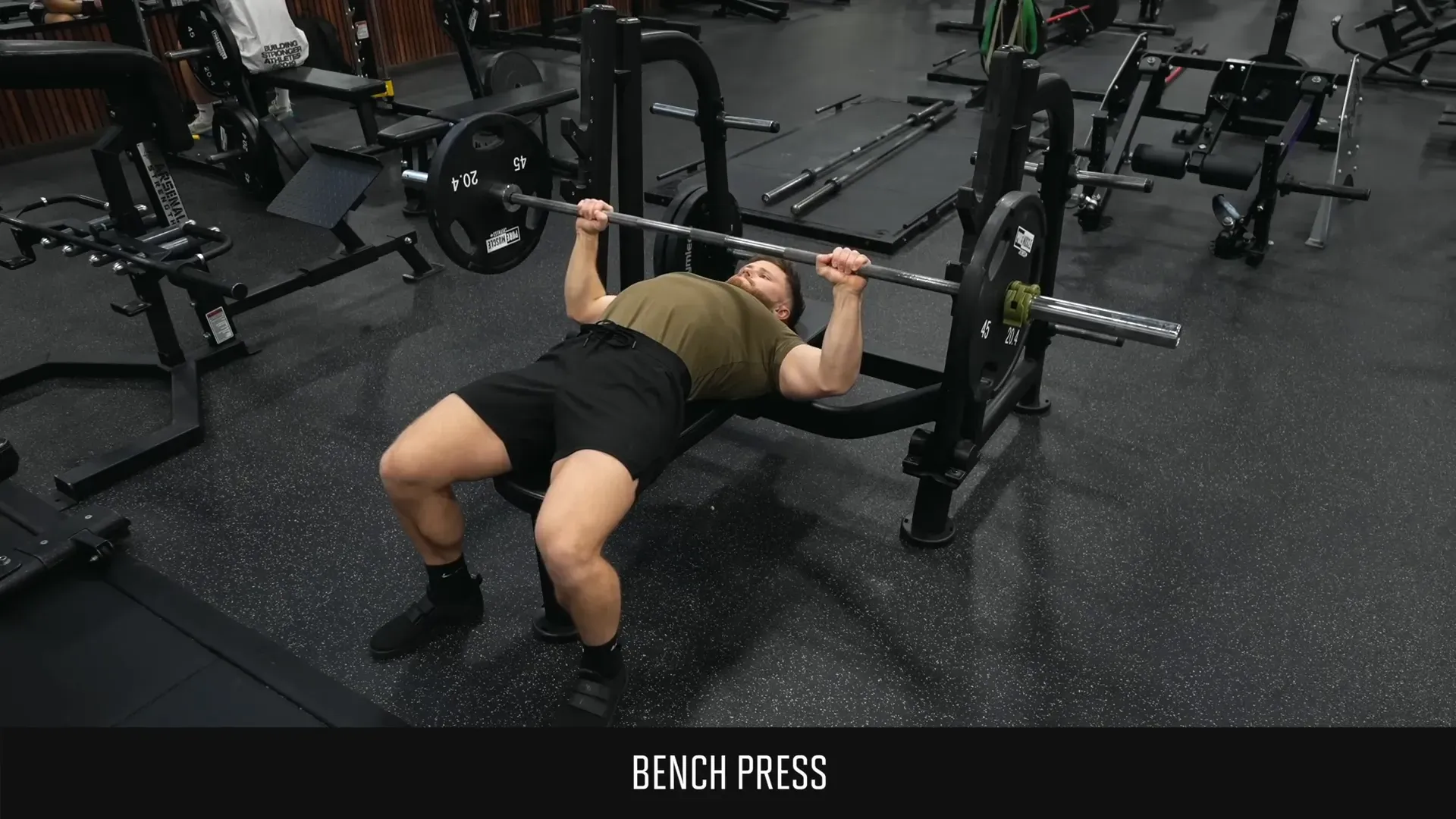
The bench press is a staple chest exercise for men and women alike, delivering high tension and effective overload. Bringing the bar fully down engages the chest deeply, and it’s easy to add weight progressively. However, some may experience shoulder strain, especially when lifting too heavy. Despite this, the bench press remains in the A tier for its overall effectiveness.
Incline Bench Press: Ideal for the Upper Chest
The incline bench press offers all the benefits of the flat version but with extra emphasis on the upper chest. Studies show that it engages both the mid and lower pecs, making it versatile for chest exercises for women and men. Its upper chest activation and stability place it confidently in the A tier.
Decline Bench Press: A Reliable Choice for Lower Chest
For lower chest exercises, the decline bench press is effective, though it has a slightly restricted range of motion. Those aiming to balance upper and lower chest development might look for additional upper chest exercises to supplement it. It ranks in the B tier for its specific lower chest focus.
Flat Dumbbell Press: A Go-To Exercise
The flat dumbbell press is among the best chest exercises with dumbbells for overall chest growth, providing a deeper stretch than barbell presses. With an excellent range of motion and pump, it allows for consistent progression. This exercise lands in the A tier, particularly suited for those seeking good chest exercises for steady improvement.
Incline Dumbbell Press: Great for Upper Chest Focus
The incline dumbbell press shares the benefits of the flat version while targeting the upper chest effectively. This A-tier exercise is one of the best upper chest exercises and is recommended for men and women looking to build a balanced chest.
Decline Dumbbell Press: Focused on Lower Chest
Less commonly seen, the decline dumbbell press targets the lower chest but can be cumbersome to set up. It’s generally rated in the B tier due to its lower pec focus and limited necessity for extra lower chest activation.
Machine Chest Press: Stability and Safety
The machine chest press ranks among the top chest exercises due to its deep stretch, stable positioning, and high tension throughout the movement. It locks the user into a set range, enhancing the mind-muscle connection for pec activation and making progressive overload easy. The safety and consistent engagement of the machine chest press place it in the S tier.
Dips: A Must-Have Compound Exercise
Dips offer an intense stretch and high tension for the chest, making them a staple compound movement. They’re easily adjustable with assistance or added weight as strength increases. While some lifters experience shoulder discomfort, dips remain a strong A-tier chest exercise for men and women alike.
Push-Ups: Convenient but Limited
Push-ups are easy to perform anywhere, but they lack overload potential, making them less effective for muscle growth once strength increases. As a chest exercise for women and men, push-ups are convenient, but their C-tier ranking reflects their limitations as a primary exercise.
Banded Push-Ups: Extra Tension for Growth
Banded push-ups add more tension at the top of the movement, though pec activation remains limited in the stretch phase. They work well as a finisher, but this movement lands in the B tier for its partial tension benefits.
Deficit Push-Ups: Enhanced Range of Motion
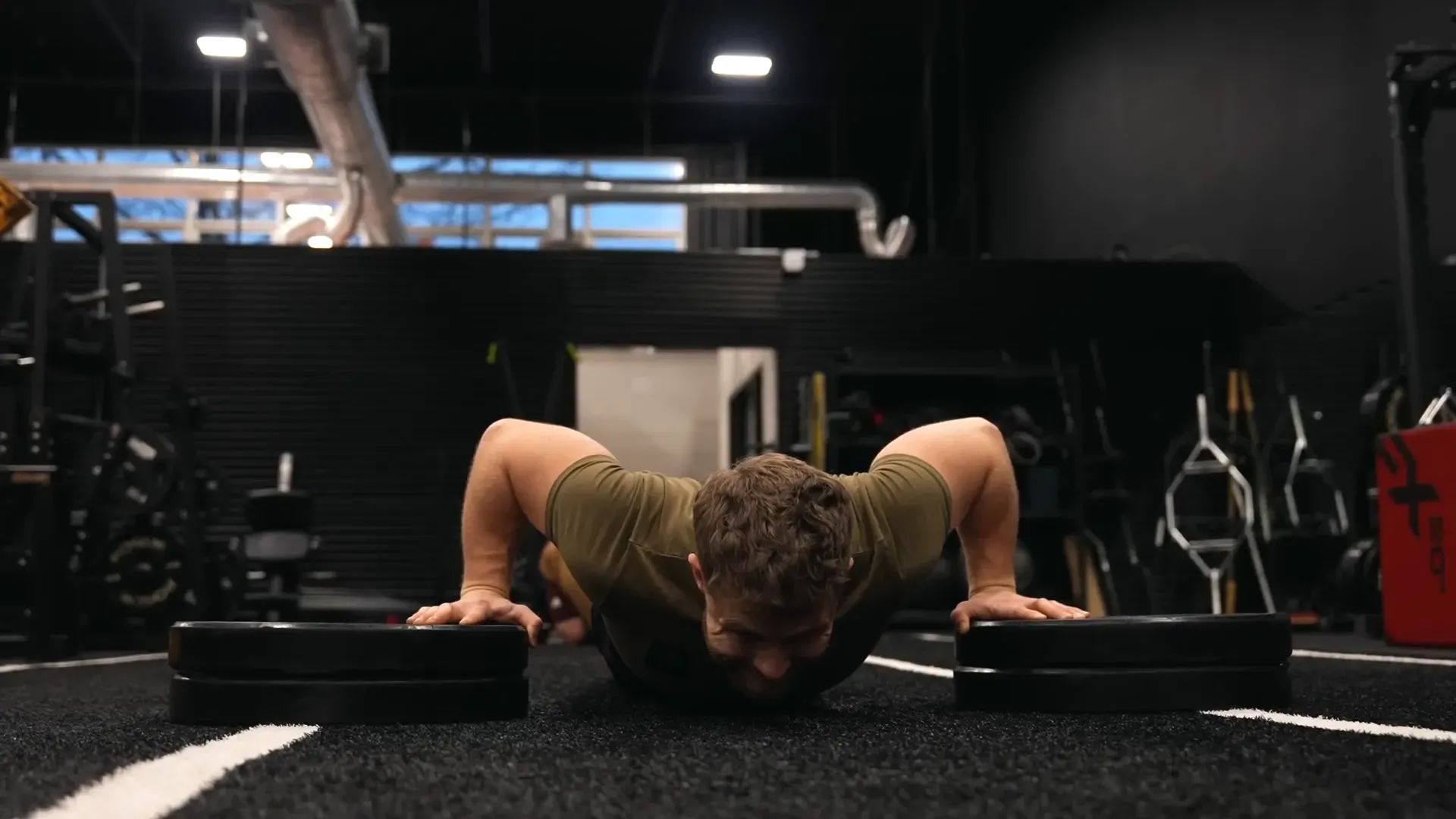
Deficit push-ups provide an increased range of motion, creating a deep stretch in the pecs. Overloading is challenging, but you can pause at the bottom to boost difficulty, making this A-tier variation one of the more effective chest exercises when done with proper form.
Plyometric Push-Ups: Better for Explosiveness
Although plyometric push-ups build explosive strength, they fall short for muscle hypertrophy due to a lack of sustained tension. Explosive tempos on loaded movements like the bench press are more effective for growth, leaving these in the D tier for hypertrophy goals.
Guillotine Press: An Advanced Option
The guillotine press involves lowering the bar to the neck while flaring the elbows, creating a strong pec stretch. However, some lifters experience shoulder strain. For those who can perform it safely, it ranks in the A tier but requires caution and proper form.
Dumbbell Guillotine Press: A Safer Variation
The dumbbell guillotine press offers similar chest stretch benefits with less risk. This version is highly effective, especially as a chest exercise with dumbbells for advanced lifters. It ranks in the A tier, making it accessible and versatile for most workouts.
One-Arm Dumbbell Press: Lacks Unique Benefits
The one-arm dumbbell press is a common sight but offers no distinct advantage over a standard dumbbell press. Each side can still work independently in a typical dumbbell chest exercise, so this movement is rated C tier.
This guide offers an in-depth ranking of the best chest exercises to structure your workouts. Include a variety of these exercises, adjusting weights and reps to suit your goals, for a balanced and strong chest workout.
Smith Machine Flat Bench Press: A Reliable Chest Exercise
The Smith Machine flat bench press often gets overlooked, but it’s effective for building chest muscle. This exercise mirrors the traditional bench press, providing similar benefits and enhanced stability. The guided movement can boost confidence, particularly when pushing closer to failure. I rate the Smith machine flat bench press in the A tier, making it a solid alternative for those who struggle with free weights in their chest exercises routine.
Incline Smith Machine Press: Target Upper Chest with Ease
The incline Smith machine press is an excellent upper chest exercise that combines the incline angle benefits with machine stability. This focused approach maximizes muscle engagement and control, helping lifters achieve a strong contraction. The guided movement also allows for added confidence, especially when reaching failure. For these reasons, the incline Smith machine press is placed in the A tier among upper chest exercises.
Cable Crossovers: Effective for Chest Isolation
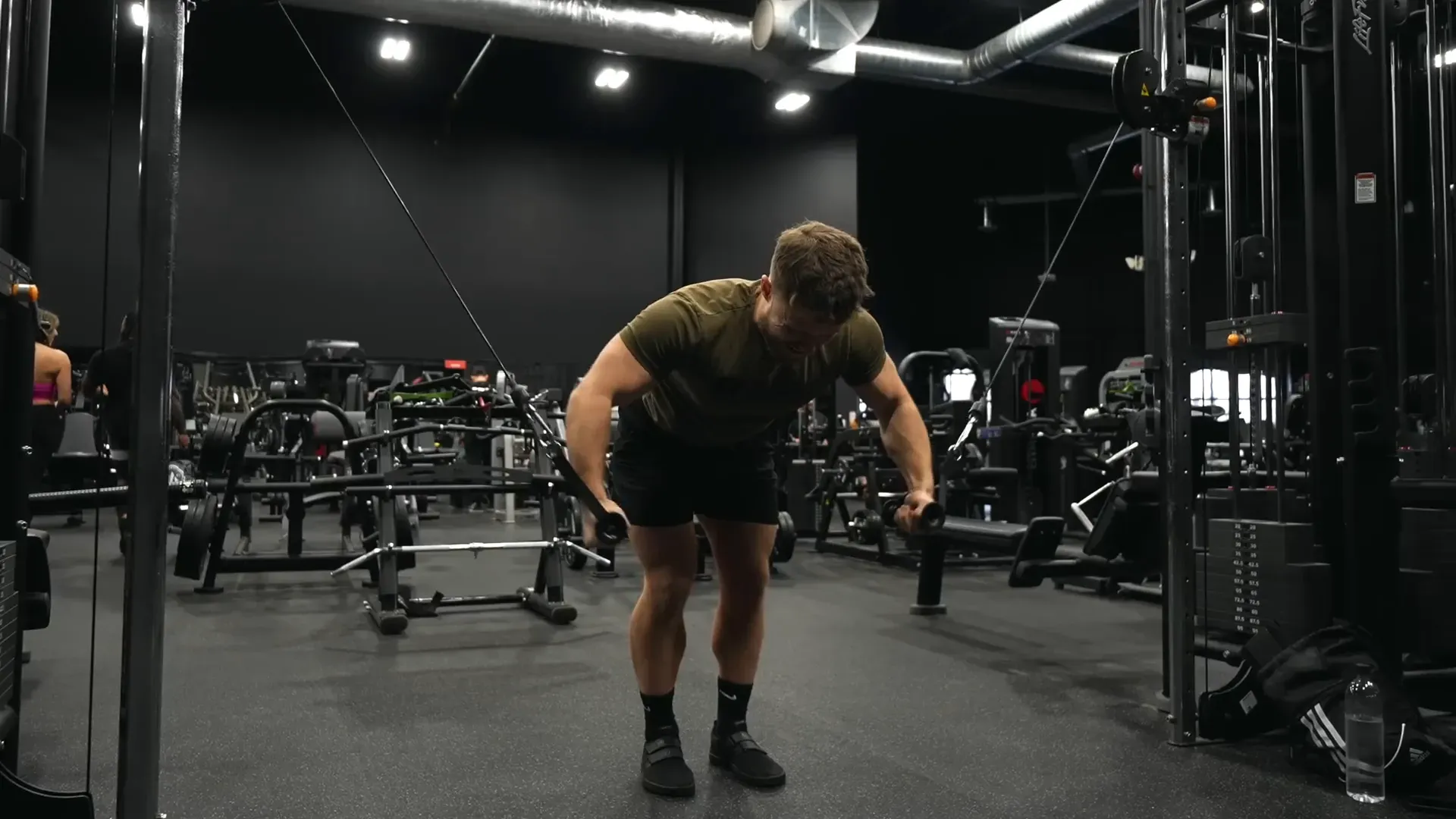
Cable crossovers are fantastic for achieving a deep stretch and consistent tension across the chest muscles. These cable chest exercises provide a satisfying pump, although progressive overload may be more limited than with presses. Increasing reps or refining technique can enhance results. Proper body alignment is crucial; leaning too far back can impact stability. Overall, I rate cable crossovers in the A tier for isolation work in good chest exercises.
Seated Cable Pec Flye: The Ultimate Isolation Exercise
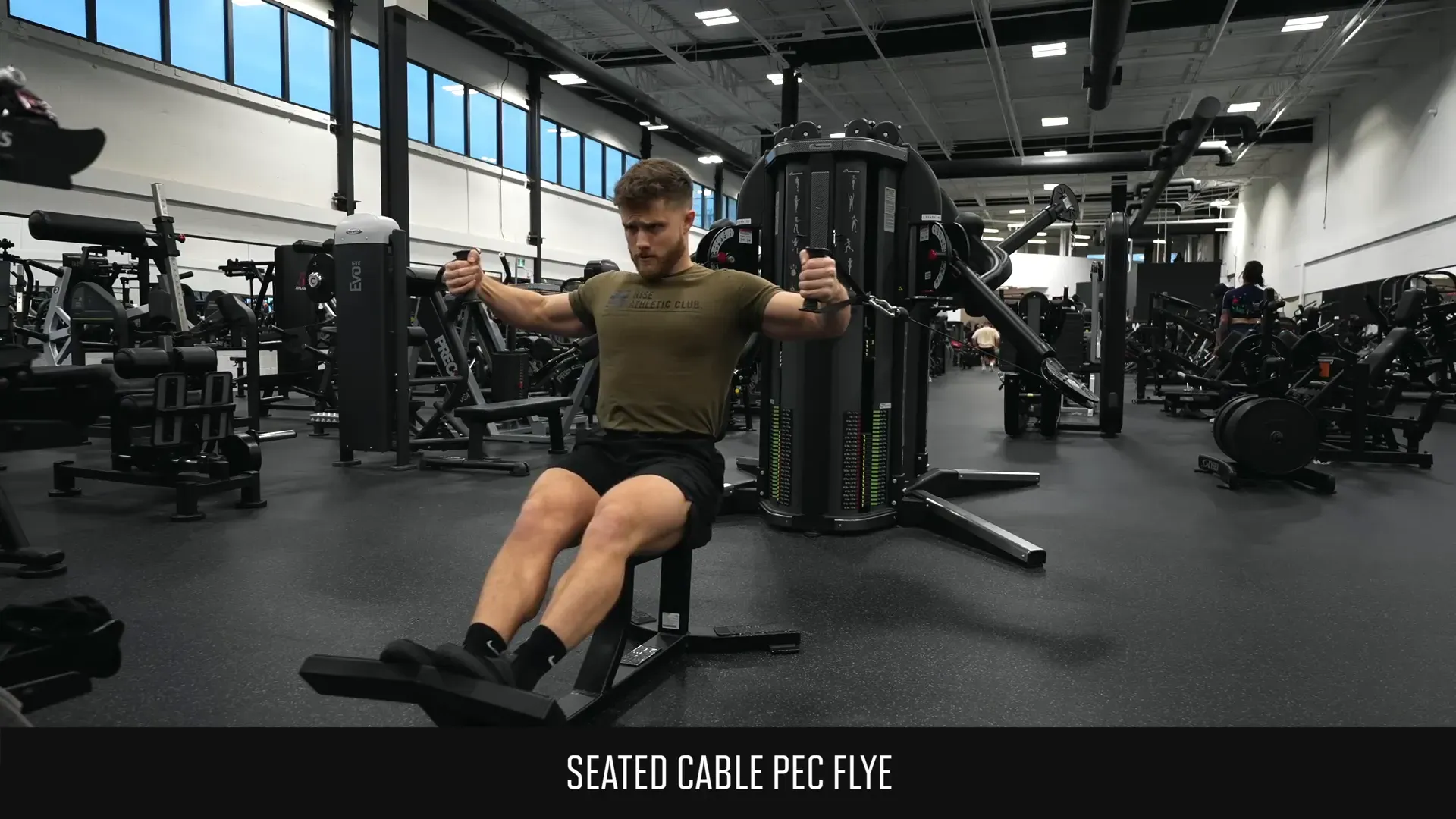
The seated cable pec flye is my top choice for isolation. Seated positioning eliminates balance issues, allowing you to concentrate purely on chest engagement. This movement provides a deep stretch, maximizing the mind-muscle connection. It’s the most effective chest exercise for targeted pec work, which is why I rate the seated cable pec flye in the S tier.
Pec Deck Machine: A Reliable Chest Workout Machine
The pec deck machine offers stable, consistent tension throughout the chest. While the fixed movement path might not suit everyone, it’s still an effective choice for pec engagement. Though I prefer cables for their flexibility, the pec deck remains a solid A-tier choice for chest exercises for men and women alike.
Dumbbell Flye: A Strong Chest Exercise Revisited
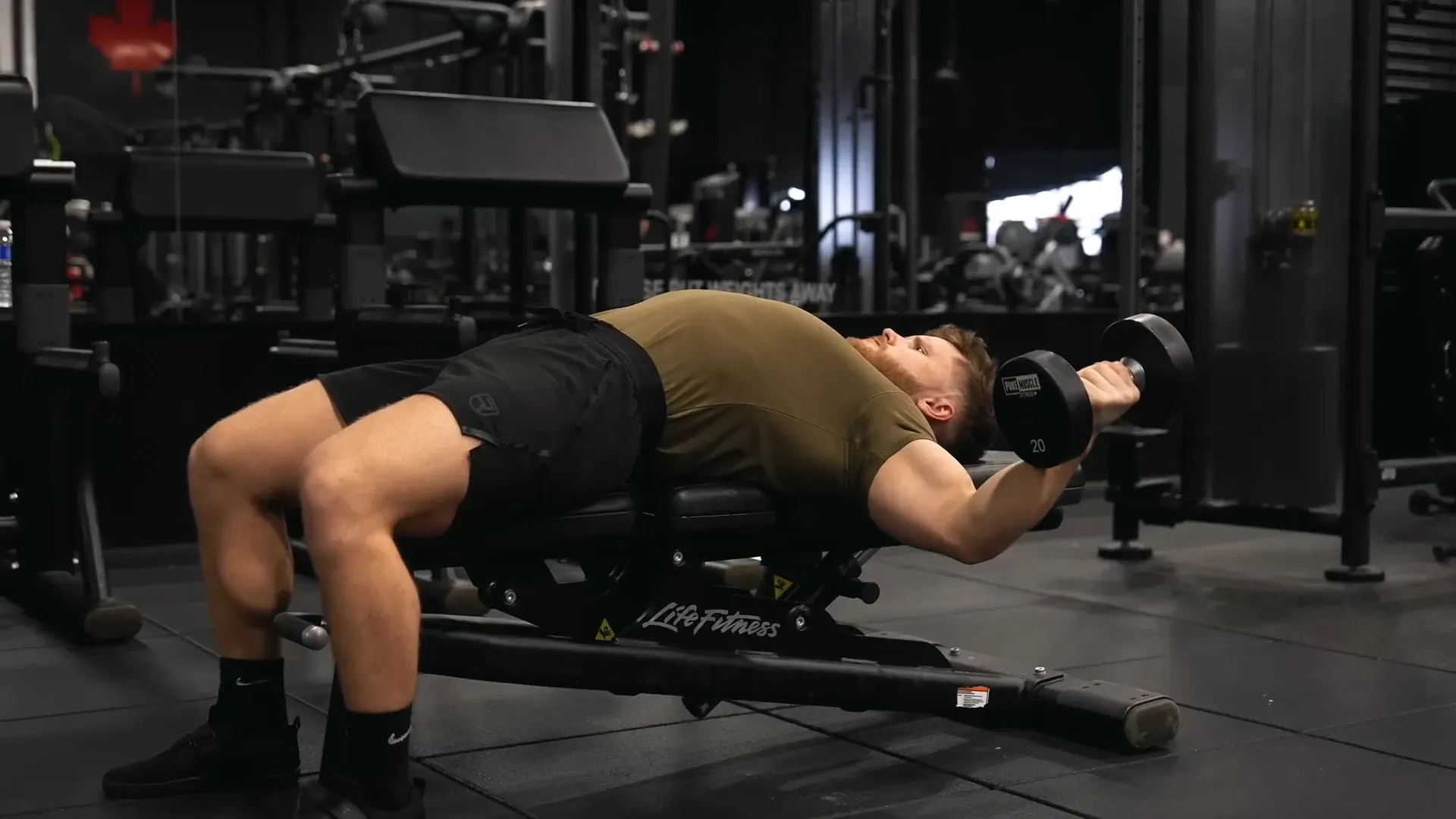
Dumbbell flyes have made a return in my training. Although they lack top-end tension, research emphasizes the importance of stretch for muscle growth. To optimize their benefits, perform them as lengthened partials, avoiding the top half where tension decreases. For its renewed value, I place dumbbell flyes in the A tier as an effective chest exercise with dumbbells.
Cable Press-Around: Unique and Powerful for Chest Activation
The cable press-around fully engages the pecs by crossing the cable over the body’s midline. This unique exercise provides a different kind of activation and is a valuable addition to any chest workout. Though it may feel awkward initially, with practice, it becomes a reliable A-tier choice for targeted cable chest exercises.
Cross-Body Standing Dumbbell Flye: Lacks Benefits for the Chest
The cross-body standing dumbbell flye aims to engage the upper chest but often fails. The lack of stretch tension and tendency to turn into a front raise shift focus away from the chest. This exercise falls into the F tier, as it doesn’t align with the goal of building a strong, balanced chest.
Floor Press: Strong for Strength, Limited for Hypertrophy
The floor press is effective for strength, particularly in the triceps and lockout, but it limits chest stretch, reducing its effectiveness for hypertrophy. While it’s valuable for chest exercises for strength, I place it in the C tier for muscle growth due to restricted range of motion.
Practical Applications
- Start with Compound Movements: Begin workouts with high-load exercises like the bench press or incline dumbbell press. Aim for 3-4 sets of 6-8 reps to maximize strength and size gains.
- Incorporate Isolation Exercises: Follow compound lifts with isolation moves like cable flyes or pec deck. Use lighter weights for 3 sets of 10-12 reps to increase muscle engagement and improve chest shape.
- Target Different Angles: To hit all areas of the chest, include both incline and decline exercises. For example, alternate weekly between incline dumbbell press and decline machine press for balanced growth.
- Focus on Stretch and Range: Prioritize exercises that offer a deep stretch, such as the dumbbell flye or cable crossover. For optimal tension, lower weights slowly, aiming for 3-second negatives on each rep.
- Progressive Overload is Key: Increase weights or reps regularly, even by small amounts. For example, add 5-10 lbs to your bench press each month or 1-2 reps to isolation exercises weekly to keep progressing.
Example Routine
- Bench Press: 4 sets of 6-8 reps
- Incline Dumbbell Press: 3 sets of 8-10 reps
- Cable Flye: 3 sets of 10-12 reps
Fact-Check of Key Points
- Hex Press: The claim that the hex press ranks as an "F-tier" exercise due to lack of chest activation might be somewhat harsh. While it does recruit the triceps heavily, it can still be effective as a supplementary exercise for some lifters focused on targeted chest work. Adjusting the elbow angle may also help engage the chest more.
- Plate Press Limitations: Labeling the plate press as one of the least effective chest exercises is accurate, as it indeed has limited overload potential. However, it can still be useful as a finisher or for pre-exhaustion before heavier presses, especially for those who need a lighter option or are working on form.
- Dumbbell Pullover’s Impact: The mixed assessment of the dumbbell pullover’s chest activation is fair, as it does engage both the chest and lats. However, it can be an effective way to improve chest flexibility and upper body engagement, especially when performed at an angle that reduces lat involvement.
- Guillotine Press Risks: The guillotine press is presented as effective but potentially risky, especially for shoulder health. This is accurate, though it’s worth noting that the potential strain can be mitigated with strict form, lighter weights, and performing the exercise only after a warm-up.
Science of Chest Exercises
Meta-analyses and studies examining the effectiveness of chest exercises have primarily focused on muscle activation, exercise variations, and their effects on strength gains. The main exercises analyzed include the flat bench press, incline bench press, and exercises with differing stability requirements, such as the Smith machine, barbell, and dumbbell chest presses.
Key Findings from Meta-Analyses
- Exercise Angles and Muscle Activation: Research comparing different angles in the bench press found that variations in incline significantly affect muscle activation in the chest muscles. The clavicular head (upper chest) is more activated at higher inclines (around 44–56°), while the sternocostal head (middle chest) is best activated in a flat bench press position (Trebs et al., 2010).
- Stability Requirements and Muscle Recruitment: Exercises with greater stability demands, such as dumbbell chest presses, require more muscle engagement, especially from supporting muscles like the biceps. This is because they need to balance the weight, unlike exercises with fixed paths like the Smith machine (Saeterbakken et al., 2011).
- Strength Gains Across Chest Press Exercises: Studies show that the free barbell bench press generally allows for the highest one-rep max (1RM), followed by the Smith machine and then dumbbells, though dumbbells offer greater range of motion and muscle activation at lower weight loads (Tillaar & Saeterbakken, 2012).
- Effectiveness of Resistance Training in Strength Improvement: Resistance training, particularly in the bench press, has been shown to improve muscular strength across all age groups, with meta-analyses suggesting that higher-intensity training significantly enhances strength outcomes in both young and older adults (Peterson et al., 2010).
Practical Applications
- For Balanced Chest Development: Incorporate both flat and incline bench press variations to activate all regions of the chest muscle effectively.
- Stability Training Benefits: Adding dumbbell exercises to training routines can enhance muscle recruitment and improve stabilizer strength, beneficial for functional movements.
- Strength Optimization: Prioritize barbell bench presses for maximal strength development and progress in one-rep max performance, supplementing with stability-focused exercises for balance.
Scientific Conclusion
Meta-analytic findings suggest that varied angles, stability demands, and resistance levels all contribute uniquely to muscle activation and strength development in chest exercises. A balanced routine incorporating multiple bench press variations and resistance levels offers comprehensive chest muscle engagement and strength gains.
More Little-Known Tips for Chest Gains
- Focus on the Stretch: For each rep, think about lengthening the chest as much as possible. Exercises like cable crossovers and flyes benefit most from a deep stretch, which can boost muscle activation. Go slow on the stretch phase to feel the muscle working harder.
- Don’t Forget Angles: Hit the chest from different angles to target all areas. Mix in incline, flat, and decline movements to work the upper, mid, and lower chest. This variety is especially helpful in building a balanced chest shape.
- Grip Adjustments Matter: On presses, a wider grip can engage the chest more effectively, while a narrower grip may shift focus to the triceps. Test different grip widths to find what best targets your chest without sacrificing form.
- Control Your Elbow Position: Keep a slight angle at the elbows rather than flaring them out directly. This setup can reduce shoulder strain and make chest engagement easier. It’s a small tweak that often brings big results in pressing movements.
- Use Machines Wisely: Machine exercises like the Smith press and pec deck are ideal for those pushing closer to failure. Their guided movement paths help prevent form breakdown when the chest is fatigued, making them safe and effective additions to a routine.
My Opinion on Bench Pressing for Chest Gains
Some lifters swear by the bench press, claiming it's the ultimate chest-builder. I disagree. I think the bench press, while popular, has limitations that make it less ideal for building a full chest. For one, it’s too easy for your shoulders and triceps to take over, especially if you’re lifting heavy. I’d argue that incline and dumbbell presses engage the chest better and give you a more even distribution of muscle tension.
I get why people stick to the bench press – it’s an ego lift. You can load it up, hit big numbers, and feel strong. But I don’t believe the bench is as effective for hypertrophy as people make it out to be. With dumbbells, you get a greater range of motion and better stretch at the bottom of the movement, which is crucial for muscle growth. Plus, you have more control over the path, allowing you to focus on your chest and avoid shoulder strain.
Now, I’m not saying to ditch the bench press altogether. It has a place for building upper body strength, but if the goal is chest development, I think you’ll get more from focusing on dumbbell presses, incline movements, and cable exercises. For me, those exercises bring better results without the shoulder risks that come with the traditional bench press.
Conclusion: Mastering Your Chest Workouts
Building a strong, balanced chest isn’t just about lifting heavy; it’s about choosing the right exercises and progressing over time. With this guide, you know which exercises maximize stretch, tension, and overload, from the bench press to cable flyes. Each of these moves plays a unique role in activating different parts of the chest, helping you achieve your muscle growth goals.
A well-rounded chest workout isn’t limited to a few heavy presses. Incorporating incline presses, cable work, and targeted exercises like dips provides a broader range of motion and muscle activation. Following this varied approach will give you a fuller, stronger chest without overloading any one area.
For those who want to make this process even easier, I recommend the Dr. Muscle app. It tailors workouts to your goals and helps you stay consistent by managing everything from exercise selection to reps and progression. Start with a free trial here: Dr. Muscle Free Trial.
FAQ
What is the best exercise for building chest muscle?
The seated cable pec flye and machine chest press are highly effective for chest muscle growth.
Are dumbbell flyes worth doing?
Yes, especially when performed as lengthened partials, making them one of the good chest exercises for a deeper stretch.
Why avoid the cross-body standing dumbbell flye?
This exercise lacks tension during the stretch and often shifts focus away from the chest muscles.
Is the floor press effective for chest growth?
The floor press is beneficial for strength but has a limited range of motion, making it less ideal for hypertrophy-focused chest exercises.
Why do I only feel my delts in chest exercises?
Feeling the delts instead of the chest during chest exercises often occurs due to improper form, especially when the shoulders take over the movement. This can happen if the shoulders are not retracted and stabilized during pressing movements.
Additionally, lifting too heavy or allowing the elbows to flare excessively may shift the focus onto the delts. To reduce shoulder involvement, ensure your form emphasizes chest engagement by keeping your shoulder blades pulled back and your elbows at a slight angle instead of directly to the sides.
